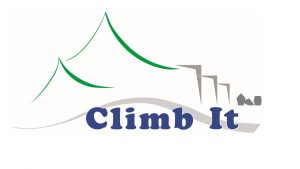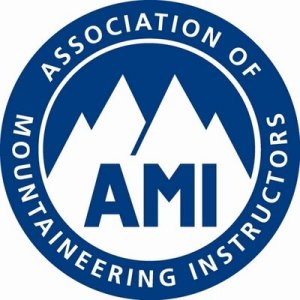This blog is written primarily with the Mountain Leader (ML) trainee in mind, but can be useful to any person looking to refine their navigation skills.
One of the big challenges that faces a ML trainee is the transition from Mountain Skills (MS) style navigation to ML style. The big difference between the two is that as an MS candidate you are tasked with thinking about your own personal navigation and safety on the hills, while as an ML you should be focusing not just on your own safety and enjoyment of the hills, but also that of your group.
To do this effectively, where possible, we should be aiming to spend less time with our entire focus on a compass, head buried in a map and pacing every metre of the entire day on the hills. A more “heads up” style of navigation allows us to cater to the needs of our group and respond to any changes in character from them that might signal discomfort, unease or nerves.
Most of the time it just allows us to be engaged with our client, providing an enjoyable day for us and them.
Don’t get me wrong, I’m not saying give up the tried and tested hard skills you’ve already attained. There is definitely a time and place for using every tool in the navigation “toolbox”, but if visibility is good and we have defined navigational aids to assist us with direction, we can train ourselves to not rely on pacing, compasses and timing as much as we might think.
A strong ability to interpret contours and their scale and proximity in relation to other features is as strong and important a tool as any.
Lets look at an example:
In the map above, we have parked at A and are going to attempt to find the spur at B. There are stepping stones at the carpark that allow us to cross the river straight away. Once crossed, we can have two “handrail” directional aids that allow us to walk in the correct direction. The first and obvious one is the river on our right hand side and then on our left hand side should be a reasonably steep uphill slope, as indicated by the three contour lines quite close together.
We will follow the river for approximately 300-400 metres and although we pass a few large bends in the river along the way, the point marked by the blue X on the map is the first point where the river creates a complete S bend, turning back on itself. As river bends can sometimes be obscured by banks or growth, we can also determine that we are at X because it happens at a close proximity to the uphill contour on the south side of the river. Prior to that the, two previous bends in the river were not in close proximity to the uphill contours to the south, with flattish ground either side of the river.
In addition, the 3 tightly packed uphill contours south of the river that we were using to handrail have started to open out and we should expect to see an easing of steepness of the ground, giving way to a series of uphill re-entrants.
Ideally and in good visibility, we don’t need a compass for a directional aid at this point either, as the re-entrants act as a funnel. We can ascend the mid-line (red dots) of each of the re-entrants by keeping the uphill ground on either side of us, and although wider at the start, by the third uphill contour line we should have arrived at a very defined re-entrant, indicated by a sharp v shaped re-entrant on the map. As this V is so pronounced, we should probably expect to be in a re-entrant no wider than 25 metres.
Continuing along the line of red dots, we travel through two much larger re-entrants, circa 50 metres wide. These re-entrants are much closer together than the 3 previous and I expect this to mean a steeper uphill climb, before coming to a small plateauing of the ground behind them and a much more rounded or fizzling out of the overall re-entrant feature as it starts to turn into steeper uniform uphill contours.
We should be able to pinpoint the small spur like feature at point B as it is the same contour height as the last rounded re-entrant.
There are other similar small spur contours that seem similar to B, but they should have a different proximity to the various re-entrants we have already identified.
- If we are standing on B, there should be 1 uphill contour to our southwest, before a short plateau and then multiple uphill contours.
- If we progress too far uphill and stand on the spur feature one contour line higher than B, then we should have a short plateau behind us, but after that multiple contour lines. Distance wise we will also be too close distance wise to the multiple steep uphill contours to our southwest.
- If we stand on the spur of the contour line below B, we would have a larger plateau southwest of us, but most tellingly we should have a two contour line large re-entrant to our south east.
There was a chance that having turned away from the river and without the use of a compass, we could have travelled in a more southerly direction (purple dots) into a small re-entrant 3 contour lines up from the river. At first this could even have been mistaken for the V shaped re-entrant we had intended to travel through, but by ascending this line our re-entrant would soon die out completely and we would be facing into a steep uniform uphill climb with no further re-entrants or spurs to tick off along the way. A failure to notice this would of course result in us being off route.
At first, this might even seem like too much detail to remember when pacing, timing and compass bearings are more straightforward.
The reading of contour lines, the characteristics of the shapes that they make and their scale and proximity to the shapes around them are not easy skills to attain and when attained they most be practiced to keep sharp. It was definitely the last part of the puzzle to fall into place for me and its something I continually work on and try improve.
However, once you start to read maps in fine detail like this it can allow for a style of navigation where the focus can be on your clients needs, an enjoyable pace and general conversation.
If you don’t understand the jargon or concepts discussed above, then you might need a more fundamental understanding of navigation. Perhaps consider booking into a Mountain Skills or bespoke navigation training course.



